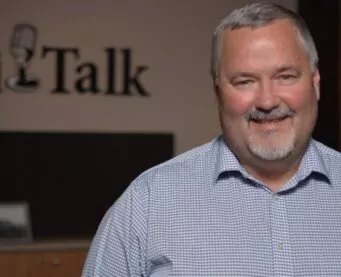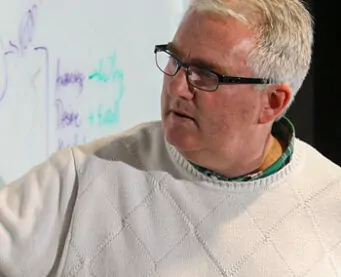New year, new face, same industry-leading and forward-thinking conversations. We’re shaking things up on the AcreForward podcast, giving you a new listening experience. Each episode, different members of our team will host, from customer success representatives and sales to our marketing and product support teams; every conversation will leave you with a better understanding of what drives Taranis.
This week, Cory Edge from our customer success team sits down with Drew Garretson, vice president of innovation, sustainability, and public policy for the newly formed Keystone Cooperative, formerly Ceres Solutions, for a conversation centered around what keeps the gears of retailers across the U.S. turning.
“At the end of the day, we report back to the American farmer. There’s no other way I could see myself working in another industry or business model,” Garretson says.
Serving the farmer starts with the structure of a company. What is the mission, and how do the established metrics and key performance indicators align with supporting that mission?
For ag retailers across the U.S., the customer is straightforward enough: farmers. The challenge and innovation lie in how those retailers choose to structure the service and support a farmer needs to be successful.
“As a farmer-owned co-op, we have got to make sure that our customers and our members are successful. That has to be our number one priority—we are here to serve them. To do that we need to have a servant heart and a servant leadership attitude,” Garretson says. “We do that in a lot of different ways. That’s why co-ops exist—that’s why the co-op business model in the U.S. is 100 years old. Farmers in our region depend on the system to deliver not just products but also the value and service behind those products.”
Growing up in central Indiana, Garretson shares that he didn’t grow up on a farm. His love for agriculture grew through watching and learning from his father, a 40+ year co-op employee and the mentorship of an “exceptional ag teacher”. The pair laid a foundation for Garretson that would become an impactful career of navigating and helping to develop marketing, business strategy and customer value for the retailers he would go on to work for.
“I watched my dad work closely with farmers to make sure they were successful in their farming operation. He built friendships in the community around that, and I feel the same way about the work I get to do,” he says.
We have an awesome story to tell, but how do we tell it?
Plain and simple, Garretson, says that those companies who are investing in the stories of their customers—those companies who are telling the authentic stories of agriculture are the ones getting it right.
“We are really good at telling stories within agriculture, to ourselves, but we can do a better job of telling our story outside of agriculture. As more and more folks become removed from the family farm and from where their food comes from, we have to do better. We have to challenge ourselves to think through how we tell the story of agriculture,” Garretson says. “We have to figure out different ways to engage because there is no one that people trust more than a farmer.”
Where is Technology in Agriculture Today?
“I think in 20 years, we are going to look back on the digital revolution agriculture went through from 2005-2015 and it will be one of the most important periods in agriculture. That is the beginning of digitizing the farming operation. We’ll talk about how digitization made farming scalable and sustainable and how it helped improve stewardship adoption,” Garretson explains.
It is no secret that the number of challenges the American farmer faces has increased seemingly at scale with the solutions the industry has created to make their job easier. The adoption of technology has seen a marked increase over the past half-decade. Garretson says that those companies who remember and focus on the farmer first are the companies he has witnessed succeed during his 17-year career during the peak of ag tech’s evolution.
Is Data the Answer?
Yes and no. Garretson tells Edge that we still have a long way to go, and while companies like Taranis are helping to accelerate the use of actionable data, the sheer quantity of what a farmer and their advisory team have to sort through is still a barrier to successful and meaningful application.
“I think we have a long way to go as it relates to trying to figure out how to effectively apply data and make insightful decisions. But we have, uh, we certainly have come a long way in a, in a short period of time,” he says.
Retailer Takeaway:
“Agriculture, even ag tech, is still a people business, and it will be a people business for a long time,” Garretson offers. “But we are going to have to meet farmers with a lot of speed and efficiency. We have to provide the expertise that results in value.”
For more takeaways from an industry leader nearly two decades deep in ag tech—essentially the timeline of the industry, listen to the full AcreForward conversation.




